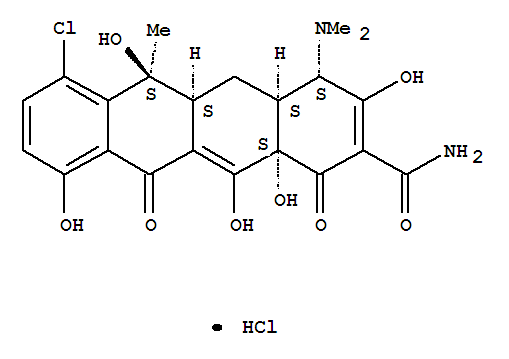
Levine伊红美蓝琼脂添加物。
密封干燥避光保存。
| Name: | Chlortetracycline Hydrochloride can be used as Secondary Standard Material Safety Data Sheet |
| Synonym: | CTC; 7-Chlorotetracycline . HC |
| CAS: | 64-72-2 |
| CAS# | Chemical Name | content | EINECS# |
| 64-72-2 | Chlortetracycline Hydrochloride | 99+ | 200-591-7 |
1、 摩尔折射率:113.91
2、 摩尔体积(m3/mol):281.0
3、 等张比容(90.2K):893.2
4、 表面张力(dyne/cm):101.9
5、 极化率(10
1、 氢键供体数量:7
2、 氢键受体数量:10
3、 可旋转化学键数量:1
4、 互变异构体数量:132
5、 拓扑分子极性表面积(TPSA):182
6、 重原子数量:34
7、 表面电荷:0
8、 复杂度:1010
9、 同位素原子数量:0
10、 确定原子立构中心数量:5
11、 不确定原子立构中心数量:0
12、 确定化学键立构中心数量:1
13、 不确定化学键立构中心数量:0
14、 共价键单元数量:2